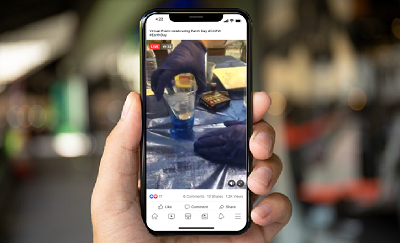Host a Virtual Demo Event
A virtual demo (demonstration) event is one or more chemistry experiments presented or demonstrated virtually and narrated to the public by a chemist or chemistry student to explain what is happening in the experiment. Ideal explanations consider the intended audience and communicate both general and aspirational knowledge. Demos for CCEW should emphasize choices citizens can understand and make to improve the environment and the health of planet earth.
Organizing a Successful Virtual Demo Event
1. Form an organizing committee
Contact local ACS members, K-12 schools, chemistry departments, community organizations, and businesses who share an interest in learning and teaching chemistry. See what resources they have available for your virtual demo event. Distribute the customizable CCEW Fact Sheet (docx) to potential committee members, demonstrators, and partnering organizations.
2. Pre-event logistics
Think about the needs of your intended audience and event. The most important decision you will make is deciding which platform you will use to broadcast your demo event. Some platforms require registration, others do not. Some platforms allow your broadcast to be recorded, others do not. Make sure to choose a platform that can accommodate the size of your intended audience. Seek out volunteers who are savvy in technology to help make informed decisions about virtual platforms. Some ideas include Zoom, WebEx GoToWebinar, YouTube Live, Facebook Live, and Instagram Stories Live.
3. Recruit demonstrators
Professors, industry members, lab technicians, and chemistry students make great teach-in speakers. Make sure your community is well represented in your list of demonstrators.
4. Determine your goals
What scientific and environmental concepts do you want to cover? Who is the audience (young kids, peers, the general public)? Is this demo the most effective and safe way to teach the concept? Introduce your virtual demo event with the big picture of why chemistry is important. Plan enough time for your demonstrations, Q&A, and group discussion.
5. Get your demo details in order
Check your space for exits and emergency equipment. Order any materials you don’t already have. Write a detailed procedure for the way the demonstration will be performed.
6. Conduct a safety analysis
In addition to reviewing (1) Safety Data Sheets, (2) ACS hazard assessment tools, (3) past incidents, and (4) tactics to minimize risk, decide which safety considerations will be shared in your explanation prior to the demo. Consider that helpers assisting or filming the demo may need to wear goggles or gloves depending upon the demo.
7. Test drive technology and practice your demo
Using your detailed written procedure, practice the demo the way it will be performed. Practice the virtual demo in front of a virtual test audience like your organizing committee and any other demonstrators, this will allow you to practice not only the demo and the pitch to your intended audience but it will allow you to practice the virtual connections. Ensure that all cameras and microphones work well, picture and sound are clear, and that volunteers handling the technology are comfortable with what they need to do (e.g., switching between demonstrators, monitoring questions from the audience, etc.).
8. Community outreach
Reach out to your local news outlets. Create digital flyers and email them to local schools, teachers, and community groups who may be interested in attending the demo event online. Partner with local businesses and leaders who can promote with you.
9. Advertise via social media
Publicize your event on the main CCEW Facebook page. Request CCEW as a cohost of your event to add your event to the CCEW Facebook and website calendar. Use artwork from the Design Toolkit for your social media events and posts.
10. Amplify your live virtual event
Share live updates from your event on social media using the hashtags #CCEW, #EarthDay2021, and #GreenChemistry. Afterward, share the success of your event through local section newsletters, print, and other communications channels.
11. Follow up with demonstrators
Don’t forget to thank demonstrators, committee members, and other volunteers for pitching in their time and resources to ensure that your virtual demo show is a success. Customize and (e)mail your volunteers a Volunteer Thank You Letter (docx) and Certificate of Participation (docx).
12. Show collective action
Consider recording your demo event and posting your video online and on social media. Take screenshots of your demonstrators during their demonstrations. Share your screenshots, photos, and videos on the CCEW Facebook page using the Event Submission Form. Obtain signed Photo Release and Consent Forms (.docx) from anyone pictured in photos, screenshots, or videos.
These steps for planning virtual demos have been adapted from the inChemistry infographic, “Tips for Planning Chemistry Demos.”


